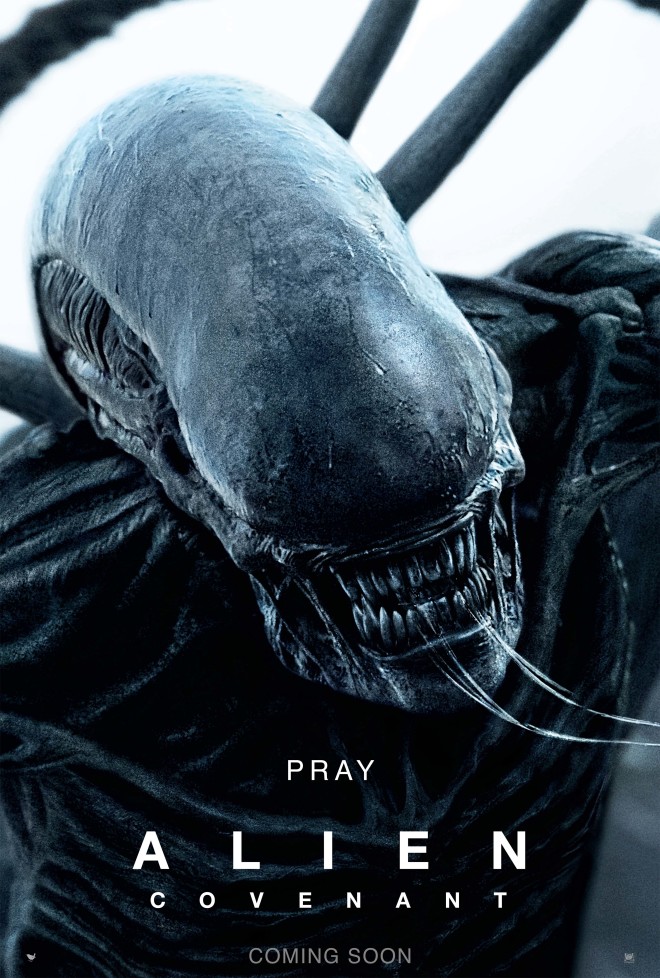“Alien: Covenant” makes its case for being perhaps the most lethal movie ever made. It certainly feature more living beings being killed onscreen than with all the previous “Alien” movies put together.
That’s quite a feat considering how violent the “Alien” movies are to begin with. Director Ridley Scott created a new sub-genre in sci-fi and horror (the derelict spaceship film) when he unleashed (from a screenplay by Dan O’Bannon) “Alien” in 1979, then a fearsome antidote to the hopeful “Star Wars” movies. “Alien” not only proved indicative of Scott’s abilities as a director (everything from “Blade Runner” and “Gladiator” still to come) but also launched the career of Sigourney Weaver, ever iconic as Ellen Ripley.
“Alien” also introduced the H.R. Giger-designed nightmare fuel known as the Xenomorph. With its phallic head, acid blood, double-mouth, exoskeletal design and facehugger spawning, it is an enduring symbol of sci-fi mated with horror and one of the greatest, most distinctive movie monsters of all time.
The “Alien” franchise became kind of a setting in which multiple genres were hewn from. James Cameron’s “Aliens” was the alien war movie. David Fincher’s “Alien 3” was the alien torture movie. There’s no telling what “Alien: Resurrection” (with a script by Joss Whedon that, according to him, was twisted beyond recognition) was supposed to be.
But Scott clearly loved “Alien” and promised to answer the big and small questions attached to the property. Where did the Xenomorph come from? That’s the big one. Scott began his exploration of “Alien’s” origins with the first of the three prequel films, 2012’s brooding, underrated “Prometheus.”
“Alien: Covenant” is technically the sixth “Alien” franchise film (if you don’t count the terrible “Alien Vs. Predator” spinoff films—Scott doesn’t count them as canon) and anyone left in ambiguity after “Prometheus” will have everything pretty much clarified after watching “Alien: Covenant.”
Ten years after the events of “Prometheus,” the colony ship Covenant is on a seven-year trip to the planet Origae (where they are to unload their precious cargo of colonists in cyrogenic slumber and human embryos) when a space accident results in the premature waking of its crew, led by Captain Oram (Billy Crudup) Danni Daniels (“Fantastic Beasts and Where To Find Them’s” Katherine Waterston). They are watched over by the android—here they’re called synthetics—named Walter (the one and only Michael Fassbender) The crew picks up a rogue transmission from a nearby planet, and Oram decides to investigate in the hopes of cutting short their journey and settling on the nearer planet itself. As with many things decided by captains in the “Alien” franchise, this proves to be a very, very bad idea. On the planet they not only discover the same alien parasite from “Prometheus,” they also meet David (also Fassbender), last seen marooned (with literally only his head still working) on the moon LV-223 at the end of “Prometheus.” He got better.
As the Covenant crew attempt to leave, things get violent in a hurry. The parasite comes after them—and takes on the malevolent, memorable Xenomorph form we’ve come to know and fear. Daniels and crewman Tennessee (Danny McBride) have to take down the Xenomorph before it can get to the cargo and multiply.
The most difficult thing about a successful, iconic franchise like “Alien” is that its subsequent films must contain a series of tropes that identifies it as part of the series (for example, the crew in cyrogenic pods, that damn drinking bird toy, the landing on an unknown rock, the facehugger implantation, among many others). If you’re aware of these details, the movies become somewhat predictable because you know they’re coming.
It is a testament to Scott’s considerable skill that he not only includes all the aforementioned tropes, but he also surprises the audience even as he answers almost all of the unanswered questions left in the wake of “Prometheus.” The effectively suspenseful “Alien: Covenant” (set in 2104) also closes the gap between “Prometheus” (chronologically the first film in the entire series happening mostly in 2094) and “Alien (which is set in 2124).” The final film in the prequel trilogy will begin shooting next year, promising to answer any questions still left over.
“Alien: Covenant” stalks the viewer like the implacable Xenomorph all the way to the very end, planting frightful little scenes here and there. Waterston is clearly a Ripley stand-in and does admirably. The star turn here is by Fassbender, of course, who must play not just an artificial life form, but two distinct artificial life forms in such a way that the reader usually doesn’t get confused which is which.
Modern CGI has made the Xenomorph fast and furious—maybe it’s nostalgia, yet somehow there is just something so tangibly terrifying about the practical (man in a suit) effects from “Alien” and “Aliens” that you want to see it here as well.
So back to the violence: It is suitably impressive that in a cinematic era where violence is so easily rendered onscreen, “Alien: Covenant” is urgently unsettling because the violence comes so easily and works so widely. Scott wields it knowingly. It is a bloody spectacle.
20th Century Fox’s “Alien: Covenant” is now showing in cinemas.
